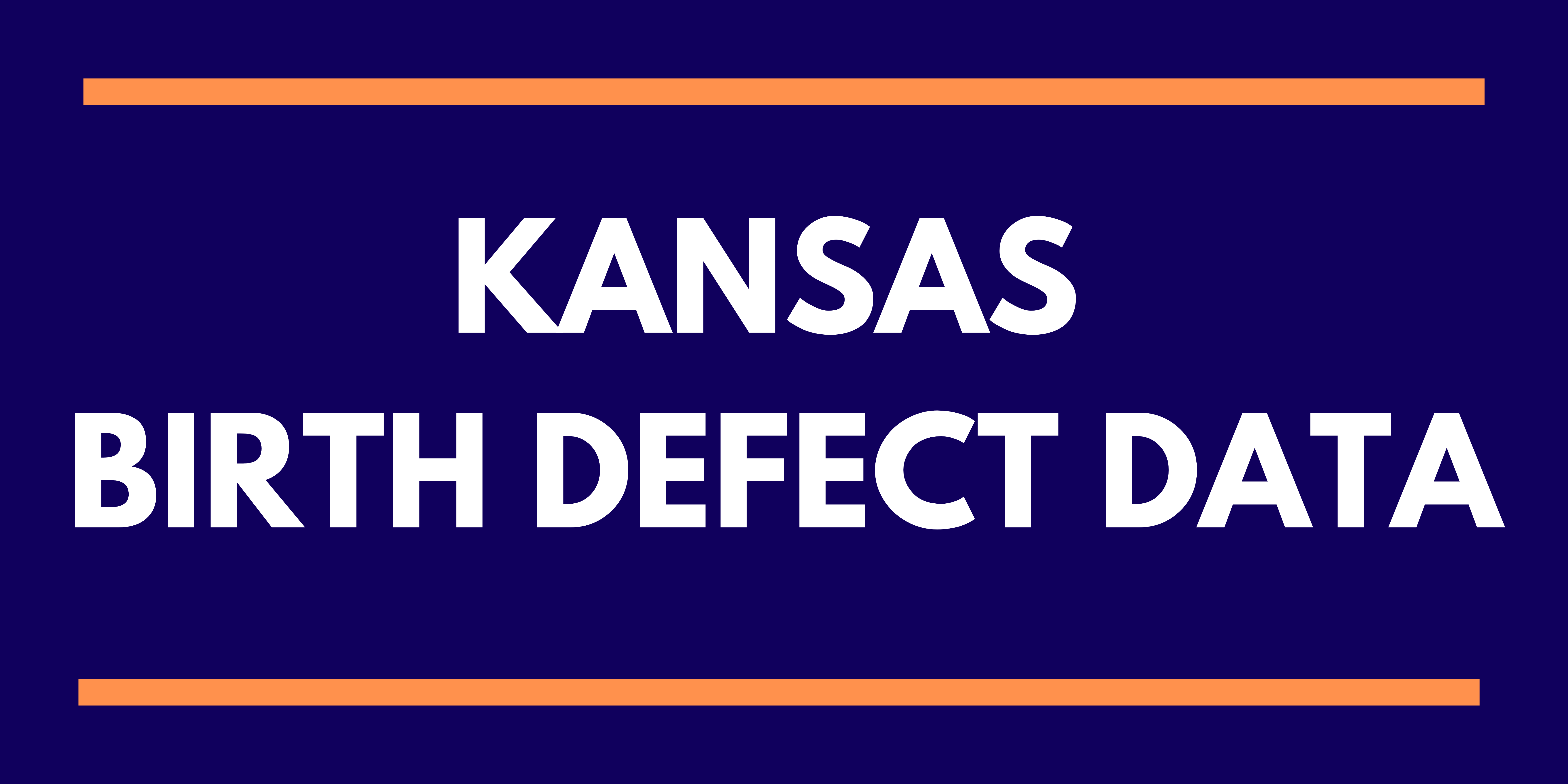Explore Kansas Birth Defects Data
Click on the icon below to explore birth defects data:

What are Birth Defects?
Birth defects are conditions that occur as a baby develops in the mother's body. A birth defect may affect how the body looks, works, or both. When a woman encounters an environmental hazard early in her pregnancy, it may increase the risk of her baby being born with a birth defect. More research is needed to study the links between environmental hazards and birth defects. That is why birth defects are tracked.
Environmental Factors and Birth Defects
The cause of 70 to 90 percent of birth defects are unknown. Sometimes the cause of a birth defect is determined only after the baby is born. Most birth defects are thought to be caused by a complex mix of genetic, behavioral and environmental factors. Although exactly how these factors work together in causing a defect is unclear. Not all birth defects can be prevented, but a woman can take steps, such as taking 400 to 800 micrograms (mcg) of folic acid daily, not smoking or drinking alcohol and preventing infections during pregnancy to increase the chance of having a healthy baby.
Tracking Birth Defects
Birth defects data available through the Tracking website obtained from the Kansas Department of Health and Environment, Bureau of Epidemiology and Public Health Informatics and the Bureau of Family Health who collect data from birthing hospitals and other medical facilities throughout Kansas on birth defects. The Kansas Birth Defects Program is responsible for the collection of information concerning congenital anomalies, stillbirths and abnormal conditions of newborns and children up to the age of 5 in Kansas. The program is a passive surveillance system that relies on the reporting of birthing hospitals and other healthcare providers. To protect privacy, no information on the Tracking website is shown that could identify an individual child or their family.
Twelve birth defects are included on the Tracking website. These include:
- Anencephaly (a baby born without parts of the brain and skull)
- Cleft lip with or without cleft palate (happens if the tissue making the lip does not join completely before birth)
- Cleft palate without cleft lip (the roof of the mouth does not join correctly)
- Gastroschisis (the baby’s intestines stick outside of the baby’s body through a hole beside the belly button)
- Hypoplastic left heart syndrome (affects normal blood flow through the heart and as the baby develops during pregnancy, the left side of the heart does not form correctly)
- Hypospadias (affects normal blood flow through the heart)
- Lower limb deficiencies (occurs when a leg of a fetus fails to form completely during pregnancy)
- Spina bifida (without anencephaly as a condition of the spine)
- Tetralogy of Fallot (happens when a baby’s heart does not form correctly as the baby grows during pregnancy and can cause a reduction in blood level oxygen flowing to the rest of body)
- Transposition of the great arteries (two main arteries of the heart –the pulmonary and aorta-are switched in position or transposed)
- Trisomy 21 (a baby born with an extra chromosome also called Down syndrome).
- Upper limb deficiencies (occur when a part of or the entire arm of a fetus fails to form completely during pregnancy)
Using Birth Defects Data
Although research about how environmental hazards might cause birth defects has been done, much more work is needed to understand the relationship between the environment and birth defects. Doctors and public health scientists know how some birth defects happen and, in some cases, can make recommendations to help prevent them. Sharing data about when and where birth defects happen will help everyone understand whether these defects might be related to the environment.
Resources